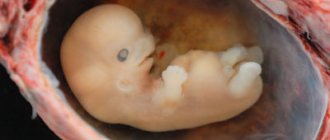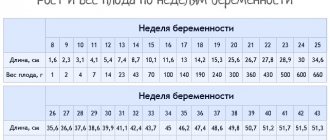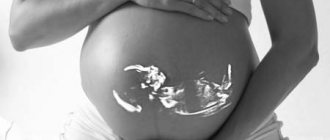Anastasia
/ Updated: 04/04/2017
Pregnancy and planning
Good day, my beautiful readers! This article is for those who are expecting their second baby.
“If men had to give birth,” said Princess Diana of Wales, “none of them would have more than one child.” It's good that you and I are braver!
But even for an experienced mother, the birth of a baby is an exciting event. And, of course, you wonder how long the second birth lasts.
After talking with familiar doctors and receiving a mountain of information, I have prepared answers to 10 main questions for you! Read more)
- 1 When it all starts
- 2 How a return trip to the maternity hospital begins
- 3 How everything will happen
- 4 What is the difference between the second and the first
- 5 How long does it take for the cervix to dilate?
- 6 How long will the pushing period last?
- 7 Can pushing take longer?
- 8 How long does it take for the placenta to be born?
- 9 How long from the start of contractions to the birth of the baby?
- 10 And it happens faster
What is second birth
Obstetricians-gynecologists divide all pregnant women into groups: first-time mothers and multiparous women. If there are no children, then the patient is classified in the first group. Those who have experienced the joys of motherhood are called second-bearing or multiparous. From a physiological point of view, repeated births are the happiest and most favorable. The body no longer experiences stress from what is happening, the uterus and cervix are more elastic, and pain is felt less. In addition, the woman is prepared psychologically: she knows what to expect and is not afraid.
Peculiarities
At the beginning of pregnancy, you may feel that nothing new will happen, but in reality this is not the case. Repeated delivery, as a rule, is easier and faster, because the body has already remembered the main stages and managed to prepare for them in advance. The expectant mother is calm, she already knows how to behave correctly, what breathing should be like during contractions, she will not worry, which eliminates the mistakes that were made when the first child was born.
How are they different from the first
Judging by the reviews, subsequent pregnancies avoid severe toxicosis, and the baby is born much faster. This is due to the fact that the body has already managed to adapt to what is happening, and the uterus and abdominal muscles are stretched by the first child. The fact that a woman is expecting another addition to her family can be noticed already at the 16th week of pregnancy - the belly is growing faster, the expectant mother is gaining weight faster. The second child is born larger and larger than the first, because the mother’s body already knows how much vitamins and nutrients the baby needs to supply.
At approximately 18-21 weeks, the baby's movements can be clearly distinguished. In addition, the stomach will be lower than the first time. This will lead to the urge to go to the toilet bothering you especially often, and your back getting more tired. However, even in such a situation, you can find advantages - it will become easier to breathe, there will be no such digestive problems as last time. When pregnant again, doctors always advise wearing a light bandage.
Lighter or heavier than the first
During the second birth, the cervix is more elastic and softer, it opens and contracts almost simultaneously, and pushing becomes more energetic. This is because the body remembers previous birth experiences. The question of whether it is easier to give birth to a second child also depends on whether there were complications after the first birth, exacerbation of chronic diseases, and how much time has passed since the birth of the first child. After 10 years, a woman’s body will no longer be able to remember past experiences, and after undergoing gynecological operations, the cervix may lose elasticity.
Second pregnancy - six differences
- Varicose veins.
Even if this misfortune did not affect you during your first pregnancy, now you need to be especially attentive to the spider veins on your legs. For prevention, you can use special compression hosiery for expectant mothers. - Risk of miscarriage
. It gets worse if there were problems with the cervix. The cervical canal expands, and the amniotic sac can enter it. - Scar on the uterus
. If you gave birth to your first child by caesarean section, this does not mean that all subsequent births are possible for you only with the same operation. But special attention should be paid to the scar on the uterus (especially if it was not transverse, but longitudinal, along the line of the middle of the uterus). In this case, there may be low attachment of the placenta, threat of miscarriage, placental insufficiency (in this case, the fetus does not receive enough oxygen and nutrients, since the uteroplacental blood flow is reduced). - Anemia
. It happens more often during a second pregnancy than the first time. If you had heavy bleeding in a previous birth and now your hemoglobin is significantly reduced (below 70), then your body needs serious restoration work. A new pregnancy in this situation may cause progression of anemia or other significant complications. - Lactation
. This is also a severe test for the female body; it is desirable that by the time of the next pregnancy the previous lactation has already ended, because during breastfeeding there is a large consumption of vitamins and microelements in order to meet the baby’s needs. This is why during lactation many women complain of increased hair loss and tooth decay. And a new pregnancy only increases this burden. In addition, during stimulation of the nipples, the production of the hormone oxytocin is stimulated, which causes contractions of the uterus (this mechanism is designed so that the uterus contracts faster after childbirth, but such contractions are not at all necessary for a new baby). By the way, nature is wise, and often when a new pregnancy occurs, the first-born often himself refuses mother’s milk, since it sharply changes its taste. - Early dates
. The second pregnancy itself becomes noticeable earlier than the first. This is due to the fact that after childbirth the uterus does not shrink to its maiden state, but remains slightly enlarged. Therefore, the second pregnancy becomes noticeable about a month earlier than the first. The mother herself feels the second child in her womb earlier. After all, she already knows well how its first tremors and movements are felt, and will distinguish them from contractions of the digestive tract. If you most likely felt the movements of the first baby at about five months, then you will feel your second baby already at four months of his intrauterine life.
What week do they give birth?
The opinion that the second child is born prematurely is not entirely correct. A normal pregnancy, regardless of the number of children present, can last up to a full 42 weeks. However, if a woman gives birth after 37 weeks, this will also be considered normal. Everything that happens before this period is premature delivery, and after 42 weeks is late.
How many weeks a second child is born also depends on the woman’s physiology, her age and how the pregnancy proceeded the first time. If a woman gave birth to her first child before the date prescribed by the doctors, there is a high probability that the situation will repeat itself. In addition, in medical practice there have been cases when a woman herself prepared herself for the birth of a child on a certain date, for example, on the vacation of her relatives, on the arrival of her grandmother, or on her birthday.
We are counting the deadline
It is generally accepted that pregnancy lasts 9 months, but gynecologists think differently. Obstetric period - 280 days or 40 weeks are added to the first day of the last menstruation before pregnancy, this is the expected due date. Why then 9, if 40 weeks is 10 months? Doctors calculate the period in such a way as to avoid confusion. Almost every woman knows the day when menstruation begins, but it is unlikely that the date of ovulation will occur. Ovulation begins approximately two weeks after the start of menstruation, the fetus spends about 260-270 days in the womb, or 38 weeks, and this will be 9 months. It is unknown how long the second pregnancy will last; birth can be expected from the 37th week. Also the normal due date is 38, 39, 40 weeks. These are such confusing calculations.
Preparation
Today there are many manuals, books and courses dedicated to how to easily give birth to a second child. They help a woman to tune in morally, calm down, and more easily endure the hardships of a second pregnancy. Experts advise not to lose sight of simple everyday aspects:
- As when planning the first pregnancy, before the second conception, the woman and her partner need to undergo a full medical examination. This point is especially important for those who decide to have a second child closer to 40 years of age.
- Take blood tests - clinical, biochemical, for hormones and to establish the Rh factor. The last analysis is especially important during the second pregnancy, because the number of antibodies in the mother’s body (if there is an Rh conflict) increases with each subsequent birth.
- If your first baby was born by caesarean section, it is important to wait until the soft tissue has scarred before planning a second baby.
How do they go
The duration of labor may differ from what it was the first time. As a rule, in nulliparous women, contractions last from 6 to 11 hours. If less than 6 hours have passed from contractions to pushing, then the birth is called rapid. When a woman managed to give birth to a child in just 4 hours of suffering, such labor is called rapid. For multiparous women, the norm is considered to be a duration of 5 to 9 hours.
Labor activity consists of only three stages:
- Start. During this period, the first contractions appear, weak at first, then with greater intensity. During contractions, the cervix begins to open and the mucous plug is released. Repeated births begin more quickly, so at the first contractions the woman needs to get ready for the maternity hospital.
- Birth of a child. The frequency and strength of contractions increases - they turn into attempts. By this point, the cervix should be dilated as much as possible so as to allow the baby to pass through.
- The birth of the placenta is the final stage. If labor is complicated or the placenta is not completely expelled, the doctor will perform manual cleaning and, if there are ruptures, will apply stitches.
How does the second birth begin?
A woman who already has children can anticipate the birth of her second child in advance. There is no way to explain this scientifically, but it is generally accepted that this is how the body gives it time to prepare. The first sign will always be contractions. Primiparas have so-called training contractions: they begin in advance, at 37-38 weeks, and do not last long. This process is not typical for second-bearing women, so any pain indicates the onset of labor.
- How to top up PayPal
- Intuitive eating - rules. Principles of intuitive nutrition by Svetlana Bronnikova and results with reviews
- How to get rid of corns on feet at home
How long do contractions last?
The uterus has a cervix, which has two narrowings: inward - the internal os and in the vagina - the external os. During contractions, these entrances begin to expand one by one: first the one that is inside, then the outside. If in a first-time mother, full dilatation of the uterus lasts about 10-12 hours, then the second birth will take place more quickly - in 6-7 hours. When the cervix is fully dilated, the woman’s main task is to push to help the baby quickly move through the birth canal.
How long does the second birth last?
Pushing is essentially contracting the abdominal muscles. When the pressure of amniotic fluid subsides, the baby's body relaxes and he begins to move through the birth canal. The body's memory helps a woman give birth faster - pushing becomes more effective, the fetus moves out faster. While this may take up to an hour and a half for a firstborn, the time for repeating the process is reduced to at least 40 minutes.
How does a return trip to the maternity hospital begin?
Irregular preparatory contractions often occur 1-2 weeks before they begin. Sometimes there is aching pain in the lower abdomen or lower back. At this time, the cervix “ripens”. It becomes shorter and softer. Or maybe open up a little.
When dilatation begins, the mucus plug may come out. A good sign: there are no more than 24 hours left until the first true contractions!
However, in half of the cases, the second birth occurs without warning.
Your body already has experience. Therefore, everything can start abruptly. Be attentive to yourself!
How the second birth goes with a small difference
For successful conception, gestation and successful birth of a child, some time is needed to replenish the body's reserve reserves of microelements and vitamins, restore menstruation and hormonal levels. It is advisable that the second pregnancy and childbirth occur no earlier than 2.5 years after the birth of the first child. A shorter period of time is fraught with the risk of prematurity before 38 weeks and other complications:
- A short pause can be complicated by anemia, which will lead to pathological development of the baby and slow weight gain.
- After natural blood loss, there is a high probability that iron deficiency occurs in the mother's body. As a result, this leads to weak labor or postpartum inflammatory processes in the pelvic organs.
- If the blood supply to the placenta is disrupted due to a lack of vitamins, the baby may not receive enough oxygen, and this can lead to hypoxia.
- In addition, if the uterus is not fully restored, especially if the previous birth involved structural changes in the tissue, there is a high risk of miscarriage in the early stages of pregnancy.
Will your second baby arrive early or not?
The optimal time for the end of pregnancy is 40 weeks of pregnancy, the second birth is no exception. However, there is an opinion that the baby is often born earlier during the second or subsequent births.
However, no one will ever say for sure that the time of birth of a child will be the 39th week of pregnancy; the second birth is the same lottery as the first. If the first child was born prematurely, then the probability of this scenario repeating is approximately 1:5, that is, about 20%. In four out of five cases, the pregnancy will be full term. The probability increases somewhat in cases where the previous child was born much earlier, even before 37 weeks, but the chances of carrying the baby to 40 or even 41 weeks are much greater.
In any case, previous experience will help you quickly recognize labor starting prematurely and take the necessary measures - the sooner you end up in the Maternity Hospital, the better it will be for both you and the baby.
Possible complications
However, even correctly planned repeated births can be completely unpredictable and do not go according to the planned scenario. Multiparous women have:
- Breaks. They may appear due to the formation of scars from previous births. If the previous labor was normal, then the risk of rupture is minimal. As a preventive measure, doctors recommend that pregnant women exercise and eat foods rich in vitamins and fiber.
- Bleeding. The risk of postpartum hemorrhage during a second birth is much greater than after the birth of your first child. The reason for this is insufficient contraction of the uterus.
- Hemolytic disorder. This difficulty is encountered when the pregnant woman has a negative Rh factor and her husband is positive. Complications rarely occur during the first conception, but subsequent pregnancies increase the risk of problems due to the fact that the woman’s body begins to produce more and more antibodies.
Reviews
Christina : “For me, the second pregnancy was much harder than the first. Constant swelling, dizziness, huge belly. But the birth was quick and almost painless.”
Galina : “As for me, giving birth a second time is scarier, since you already know everything. The first birth lasted 16 hours, the second – 3 hours, and the third – 6 hours. All pregnancies were the same."
Vera : “The second pregnancy generally went unnoticed, since I had a two-year-old child in my arms, there was no time to be particularly distracted by her. And she gave birth in 4 hours, although the contractions were very painful.”
C-section
To determine the method of delivery, women who have already given birth by cesarean section are hospitalized at 36-38 weeks of pregnancy. Such actions help doctors monitor the subsequent course of pregnancy more closely and have time to provide emergency assistance. You can give birth on your own after a cesarean section, but only if the following conditions are met:
- only one cesarean section in the mother's history;
- previous births and the postpartum period passed without complications;
- the scar on the uterus is functional, completely healed and does not bleed;
- the fetus has a cephalic rather than breech presentation;
- the child’s weight does not exceed 3.6 kg;
- the pregnant woman does not have chronic diseases, infections or fungus in the birth canal;
- the woman has not crossed the threshold of childbearing age.
Pain relief and stimulation during the second birth
Having gone through your first labor, you've probably made up your own mind about whether you need pain relief or labor induction. And, of course, these aspects should be discussed with your doctor.
But it’s worth taking into account the facts that, firstly, the period of contractions will be shorter (and you don’t know how much), and the period of pushing will be easier, which means you may not need anesthesia at all, or to a lesser extent. Indeed, for the successful passage of the period of pushing, it is desirable that the anesthesia has already ceased to act. And secondly, the course of labor may be complicated, which may necessitate forced stimulation through an oxytocin drip or puncture of the bladder. You should be aware of the specific situation and have a certain trust in doctors.
When to plan a second pregnancy
Experts recommend not to rush to conceive again, to allow the body to get stronger and gain strength: correct hormonal levels, the menstrual cycle, stock up on necessary nutrients, and normalize the functioning of the nervous system. According to WHO, at least two and a half years must pass for full recovery. During this rehabilitation period, especially if the woman in labor is breastfeeding, you need to carefully monitor your health, eat right and be physically active.
Too big a difference is also not desirable. If more than 7-10 years have passed from the time of the first conception to the second pregnancy, gynecologists again consider such women to be first-born. During this time, the body has managed to forget everything, and will have to prepare for childbirth again. In addition, years do not improve health. After 35-40 years, a woman accumulates more and more chronic diseases and bad habits, due to which the pregnancy itself proceeds with unforeseen complications: severe gestosis, threat of miscarriage, genetic abnormalities of fetal development.
Between first and second
If your firstborn is not yet two years old, he, of course, still requires a lot of care and attention from you. However, it is also very important not to forget about yourself now. Here are some simple techniques that will reduce physical stress on your body.
- Try to carry your baby in your arms as little as possible. Actively use a cane stroller, teach your baby to climb into a crib or bathtub on his own, using a small stable bench and your hand to support him.
- If you are sitting and your child wants to climb onto your lap, do not pick him up - let him climb on his own.
- If you still have to pick up the baby, do not bend over, but bend your knees, keeping your back straight. After picking up your baby, carefully stand upright, straightening your legs.
- If your older child still sleeps in the same bed with you, it's time to move him to a separate crib or room. Keep in mind that this should not be done immediately before giving birth, but at least several weeks in advance, so that the little alien does not suddenly supplant its predecessor. Arrange your child’s new “home” with him, make it cozy and calm.
And in any case, there is no need to panic - despite all the difficulties, not a single mother has ever regretted giving birth to such wonderful babies. Experienced parents believe that life becomes easier with two or three children. Your children will have the most reliable support and support for the rest of their lives.
Inessa Smyk
In this article:
It may seem that all births are similar to each other, but this is not the case. The second birth is easier than the first. And there are reasons for this.
So, have you decided on a second baby? Of course, you need to know how the second pregnancy goes, how long the second birth lasts - 37, 38, 39 or 40 weeks, are they really shorter than the first? So many questions!
The second pregnancy and second birth will certainly not be the same as the first. Especially if the child was not planned and was conceived “by accident.” Where to give birth, how to choose a maternity hospital and a doctor, what else you need. The first time there were only relatives and friends, whose advice is sometimes harmful or downright stupid. But now, that is your own experience! Now there will be time and opportunity to correct all mistakes, take into account all the nuances, and do everything perfectly! Pregnancy should be desired, and the child should be loved and long-awaited. After all, you will have to wait 40-38 weeks, which is a long time.










